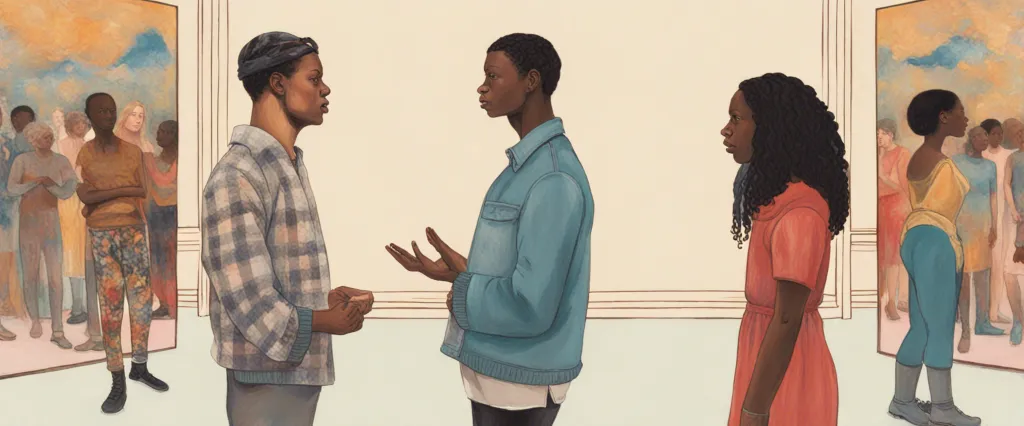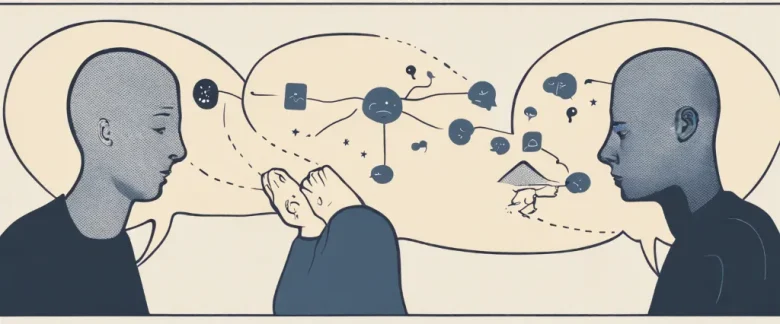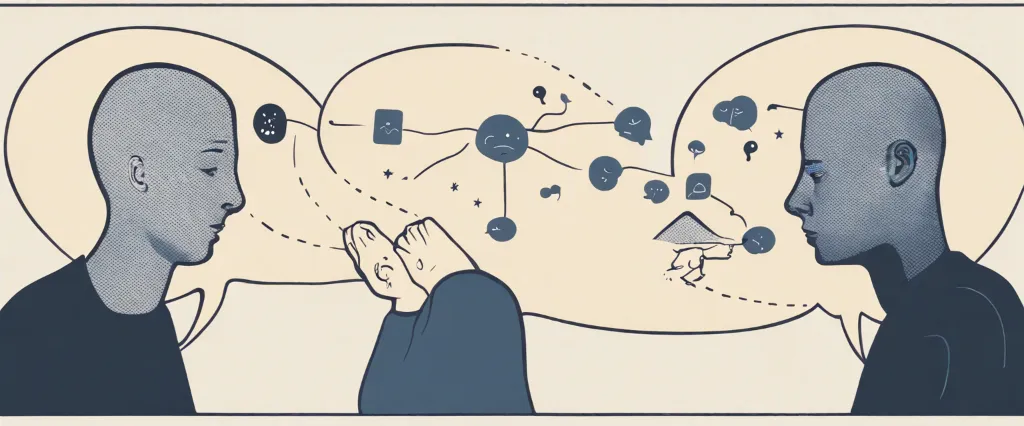In the groundbreaking book, “More Than a Body,” Lexie Kite presents a compelling argument against society’s obsession with female appearance and challenges readers to redefine their relationship with their bodies. Co-authored by her identical twin sister, Lindsay Kite, the book lays the foundation for a powerful movement that seeks to dismantle harmful beauty norms while promoting body acceptance and self-love. Through thought-provoking research, personal experiences, and empowering stories, Lexie Kite illuminates the detrimental influence of objectification on women’s lives, offering a transformative perspective on body image, confidence, and personal growth. As co-founders of Beauty Redefined, a nonprofit organization dedicated to promoting positive body image, Lexie and Lindsay Kite have become leading voices in the movement, guiding individuals towards authentic self-worth and paving the way for a society that values more than just external appearance.
Chapter 1: Beyond Appearance
Chapter 1 of the book “More Than a Body” written by Lexie Kite, is titled “Beyond Appearance” and delves into the societal pressures and obsession with physical appearance that women face in today’s culture. Kite introduces the reader to the concept of the “Beauty Myth,” perpetuated by various industries and media platforms, which presents an unattainable standard of beauty that women are expected to adhere to.
The chapter highlights the detrimental effects of this obsession with appearance, with women constantly feeling inadequate and striving for an idealized version of themselves. Kite emphasizes that this preoccupation with external beauty distracts individuals from recognizing and appreciating their internal worth and value.
Kite shares personal experiences and stories of women who have struggled with body image issues, self-doubt, and low self-esteem due to societal expectations. The chapter also explores the link between appearance and self-worth, highlighting the need for a shift in mindset to focus on holistic wellbeing rather than solely physical attributes.
The author encourages readers to challenge and question societal beauty standards, urging them to reject the harmful comparisons and judgment that often arise from these arbitrary ideals. Kite emphasizes the importance of embracing individuality, diversity, and uniqueness, extending self-compassion and acceptance to oneself and others.
In summary, Chapter 1 of “More Than a Body” critically examines the damaging consequences of society’s obsession with physical appearance. It calls for a shift in perspective, encouraging readers to look beyond the surface and embrace their inner worth, while rejecting society’s narrow definition of beauty.
Chapter 2: Self-Acceptance
Chapter 2 of “More Than a Body” by Lexie Kite focuses on the concept of self-acceptance. The chapter encourages readers to challenge the societal pressures and unrealistic beauty standards that often lead to self-judgment and dissatisfaction with one’s body.
Kite begins by exploring the impact of the media, stating that images we encounter daily perpetuate the idea that our bodies need fixing and that we are not enough as we are. She highlights how these distorted messages can contribute to body shame and suggests that learning to accept ourselves is essential for liberation from these damaging patterns.
The chapter then delves into the importance of owning our narratives and reframing the way we perceive our bodies. Kite introduces the concept of “body neutrality,” which suggests that we shift our focus from self-criticism or overly positive body affirmations to a neutral mindset that acknowledges that our bodies are more than just objects to be judged based on appearance. This mindset allows us to appreciate all that our bodies can do beyond their physical attributes.
Kite shares personal stories and experiences of individuals who have struggled with self-acceptance, highlighting the impact on their mental health and overall well-being. She provides readers with practical strategies, such as self-compassion, understanding the social construction of beauty, surrounding oneself with diverse bodies, and practicing gratitude, to cultivate a more accepting and compassionate mindset towards their own bodies.
Ultimately, Chapter 2 of “More Than a Body” emphasizes the importance of recognizing our worth beyond our physical appearance and learning to accept and appreciate ourselves for who we truly are, irrespective of societal ideals or unrealistic beauty standards. Self-acceptance is presented as a powerful tool for personal growth and a gateway to living a more fulfilling and authentic life.
Chapter 3: Body Diversity
Chapter 3 of “More Than a Body” by Lexie Kite delves into the concept of body diversity and challenges society’s narrow definition of beauty. The chapter begins by highlighting how the media, fashion industry, and diet culture perpetuate the belief that there is only one ideal body type. This ideal is typically slender, tall, and conventionally attractive, leading many individuals to feel inadequate and discontent with their own bodies.
Kite then introduces the concept of body diversity and emphasizes that our bodies come in various shapes, sizes, and colors, each of which is beautiful and deserving of respect. The chapter explores the harmful effects of body shaming and the negative impact it has on individuals’ self-esteem and body image. The author asserts that true body acceptance involves embracing and celebrating the diversity of all bodies, rather than conforming to societal expectations.
Furthermore, the chapter highlights the importance of representation and inclusion, particularly in the media. Kite argues that the lack of diverse body types in mainstream media perpetuates the notion that certain body types are superior, perpetuating harmful beauty standards. By demanding representation and challenging the status quo, individuals can pave the way for a more inclusive and accepting society.
The chapter also discusses the damaging effects of comparing oneself to others and encourages readers to shift their focus from appearance to their body’s functionality and inherent worth. By appreciating and honoring what our bodies can do, rather than solely focusing on their appearance, we can cultivate a healthier and more positive relationship with ourselves.
In summary, Chapter 3 of “More Than a Body” highlights the importance of body diversity and challenges society’s narrow standards of beauty. It emphasizes the need for representation, inclusion, and self-acceptance, urging readers to embrace and celebrate the diversity of all bodies.
Chapter 4: Influence of Media

Chapter 4: Influence of Media in the book “More Than a Body” by Lexie Kite explores the pervasive influence that media has on shaping our perception and understanding of our bodies, particularly for women. The chapter starts by highlighting the ways in which media promotes a narrow and unrealistic beauty standard, often leading to body dissatisfaction and negative self-image among women.
Kite argues that the media portray women’s bodies as objects to be scrutinized, critiqued, and compared to, perpetuating harmful ideals of perfection. These narrow standards primarily focus on a particular body type, reinforcing a limited definition of beauty that leaves many women feeling inadequate and ashamed of their bodies.
The chapter further delves into the concept of “self-objectification” – the process where individuals internalize the objectification propagated by the media and start to view their bodies as mere objects for others to evaluate. Kite emphasizes how this harmful mindset hinders women’s ability to truly appreciate and care for their bodies.
Moreover, the chapter highlights the ways in which media representation often neglects diversity and fails to acknowledge the existence and beauty of different body shapes, sizes, abilities, and skin colors. This lack of diversity further perpetuates narrow beauty standards, excluding many individuals from feeling valued and represented in society.
Kite argues that challenging and resisting these media-driven ideals is crucial for fostering a healthy body image and promoting self-acceptance. She encourages readers to actively seek out media that portrays diverse bodies, acknowledges beauty in various forms, and promotes body positivity and inclusivity.
Overall, Chapter 4 of “More Than a Body” sheds light on the significant influence media has in shaping our perceptions of our bodies and emphasizes the need for a portrayal of diverse bodies in order to challenge harmful beauty standards and promote a more inclusive and compassionate society.
Chapter 5: Liberation of the Body
Chapter 5: Liberation of the Body in the book “More Than a Body” by Lexie Kite focuses on the concept of freeing oneself from societal body standards and developing a positive body image. The chapter begins by highlighting the harmful effects of body comparison and the unrealistic beauty standards perpetuated by the media, which limit individuals’ perceptions of their own bodies.
The authors emphasize the importance of recognizing that our bodies are tools for experiencing life rather than objects to be constantly judged and modified. They discuss the idea that liberation from body dissatisfaction can be achieved by understanding and accepting the unique qualities and capabilities of our bodies.
Furthermore, “More Than a Body” encourages readers to question the reasons behind their desire to change their bodies. The book argues that these desires are often influenced by external factors rather than personal preferences or well-being. By challenging these influences, individuals can choose to reclaim their bodies and find liberation from societal expectations.
The chapter also addresses the impact of social media on body image issues. It discusses the phenomenon of comparing oneself to others’ carefully curated online personas, which often leads to feelings of inadequacy and a distorted self-perception. The authors encourage readers to curate their social media feeds intentionally, following accounts that promote body positivity and diversity.
Overall, Chapter 5 encourages individuals to liberate themselves from the constraints of society’s standards, to embrace their bodies as unique and valuable, and to challenge the influence of external factors on their body image. Through self-compassion and a focus on holistic well-being, individuals can cultivate a positive body image and find liberation in accepting and celebrating themselves as more than just a body.
Chapter 6: Self-Expression
Chapter 6 of “More Than a Body” by Lexie Kite focuses on self-expression and its complex relationship with the way we perceive and value our bodies. Kite explores how societal standards and cultural messages influence self-expression and how our bodies are often used as tools for this expression.
The chapter begins by highlighting the importance of self-expression as an essential human experience. Kite emphasizes that self-expression allows us to communicate our thoughts, feelings, and identity to others. However, she also notes that our bodies are often the primary means of self-expression, making them vulnerable to external judgment and scrutiny.
Kite discusses how societal expectations and beauty standards limit self-expression by promoting a limited range of acceptable bodies and expressions. She digs into the concept of body conformity, explaining how the pressure to conform to certain body standards restricts our ability to fully express ourselves. This restriction not only affects our physical appearance but also impacts our sense of self-worth and authenticity.
Moreover, the chapter investigates the relationship between self-expression and the commodification of bodies. Kite argues that when bodies become products that can be bought, sold, and objectified, our self-expression becomes influenced by market forces. This leads to the objectification of bodies and the prioritization of external validation over genuine self-expression.
Kite concludes the chapter by encouraging readers to challenge societal norms and embrace diverse forms of self-expression. She highlights the importance of embracing our unique identities and decoupling self-expression from external judgments. By reclaiming self-expression, individuals can cultivate a more authentic and fulfilling relationship with their bodies.
Overall, Chapter 6 of “More Than a Body” emphasizes the impact of societal standards on self-expression and encourages readers to resist the limitations imposed by these standards, leading to a more liberated and genuine expression of one’s identity.
Chapter 7: Body Positivity
Chapter 7: Body Positivity of the book “More Than a Body” by Lexie Kite focuses on the concept of body positivity and its significance in embracing ourselves and challenging societal beauty standards. The chapter delves into the history and evolution of body positivity, aiming to inspire and empower readers to develop a positive relationship with their bodies.
Kite begins by highlighting the power of language and the impact it has on our self-perception. She emphasizes the importance of using empowering and inclusive language when discussing bodies, encouraging readers to challenge negative narratives and reclaim their bodies as valuable and unique.
The author discusses how societal beauty standards have been dictated by industries that profit from our dissatisfaction, creating damaging ideals that are impossible to meet. She urges readers to resist this manipulation and advocate for body diversity, emphasizing that all bodies, regardless of shape, size, or physical appearances, are worthy and deserving of love and respect.
Kite also addresses the detrimental effects of body shame and offers practical strategies to combat it. She encourages readers to identify their triggers, foster self-compassion, and practice self-care and self-acceptance. The chapter recommends engaging in body positive communities both online and offline to seek support and share experiences.
Furthermore, Kite introduces the concept of body neutrality, highlighting that body positivity can be a challenging journey and that it’s okay to not always feel positive about our bodies. She emphasizes that neutrality can be a stepping stone towards embracing and celebrating our bodies fully.
Overall, Chapter 7 explores the importance of body positivity as a means to challenge oppressive beauty standards, develop a healthier relationship with our bodies, and foster a sense of self-acceptance and happiness. Through a combination of personal anecdotes, research findings, and practical advice, Lexie Kite encourages readers to celebrate their bodies, acknowledge their worth, and embrace their uniqueness.

Chapter 8: Love and Care
Chapter 8 of “More Than a Body” by Lexie Kite delves into the concepts of love and care, exploring how society’s obsession with appearance can hinder individuals from experiencing and expressing genuine love, care, and compassion for themselves and others.
Kite begins by highlighting the impact of objectification on relationships. Society’s focus on physical appearance turns people into objects to be consumed rather than individuals deserving of love and care. This leads to shallow connections and a lack of true emotional intimacy.
The chapter then explores the importance of self-love and self-care. Kite emphasizes that valuing oneself is essential for cultivating healthy relationships with others. By prioritizing self-care, we can better show up for ourselves and for those around us. This involves recognizing that self-worth is not dependent on physical appearance but on our intrinsic value as human beings.
Next, Kite discusses the power dynamics in relationships, highlighting the oppressive nature of beauty standards and the ways they can perpetuate inequalities. She encourages readers to critically analyze these dynamics and actively challenge the harmful beauty ideals society imposes.
The chapter also emphasizes the significance of fostering love and care within communities. Kite advocates for creating spaces where everyone feels seen, respected, and valued for who they are, rather than for their appearance. This requires dismantling harmful norms and working towards inclusivity and acceptance.
In conclusion, Chapter 8 focuses on how love and care are impacted by societal pressures surrounding appearance. It urges readers to develop self-love and compassion, challenge oppressive beauty standards, and foster inclusive communities that prioritize genuine connections based on mutual respect and care.
After Reading
In conclusion, More Than a Body by Lexie Kite is a powerful and thought-provoking book that challenges societal beauty standards and encourages readers to embrace self-acceptance and body positivity. Through personal stories, research, and actionable steps, the Kite sisters dismantle the harmful belief that our worth is determined by our appearance. They emphasize the importance of shifting the narrative surrounding our bodies to recognize their inherent value beyond physical attributes. With an empowering and compassionate approach, More Than a Body serves as a guide for individuals to reclaim their relationship with their bodies, promoting a healthier and more inclusive culture of self-love.
1. The Body Is Not an Apology: The Power of Radical Self-Love by Sonya Renee Taylor – In this book, Sonya Renee Taylor explores the crucial connection between radical self-love and building a more just and compassionate world. This powerful and transformative work challenges societal norms, encourages body acceptance, and promotes self-compassion.
2. Hunger: A Memoir of (My) Body by Roxane Gay – In this honest and deeply personal memoir, Roxane Gay shares her experiences as a woman living in a world that is often unkind to bodies that don’t fit societal expectations. Gay eloquently explores issues of body image, self-worth, and the impact of trauma while pushing readers to question and challenge the standards they’ve been conditioned to accept.
3. Body Talk: 37 Voices Explore Our Radical Anatomy edited by Kelly Jensen – This anthology brings together a diverse group of writers, activists, and artists to offer a variety of perspectives on the topic of body image. Through personal essays, poetry, and artwork, these contributors explore the complexities of self-acceptance, body positivity, and the impact of body politics.
4. The Beauty Myth by Naomi Wolf – Naomi Wolf’s groundbreaking book examines the societal pressures placed on women to conform to conventional beauty standards. She uncovers the ways in which these standards are used to manipulate and control women, and explores the consequences for our culture and individual self-worth. This thought-provoking work challenges readers to question and resist the beauty myth.
5. Embrace: My Story from Body Loather to Body Lover by Taryn Brumfitt – Taryn Brumfitt’s memoir takes readers on her personal journey of self-discovery and body acceptance. From a woman who despised her own body, she becomes an advocate for body positivity and empowers others to embrace their bodies, no matter their shape or size. Brumfitt’s story serves as an inspiring reminder to live authentically and love ourselves unconditionally.




